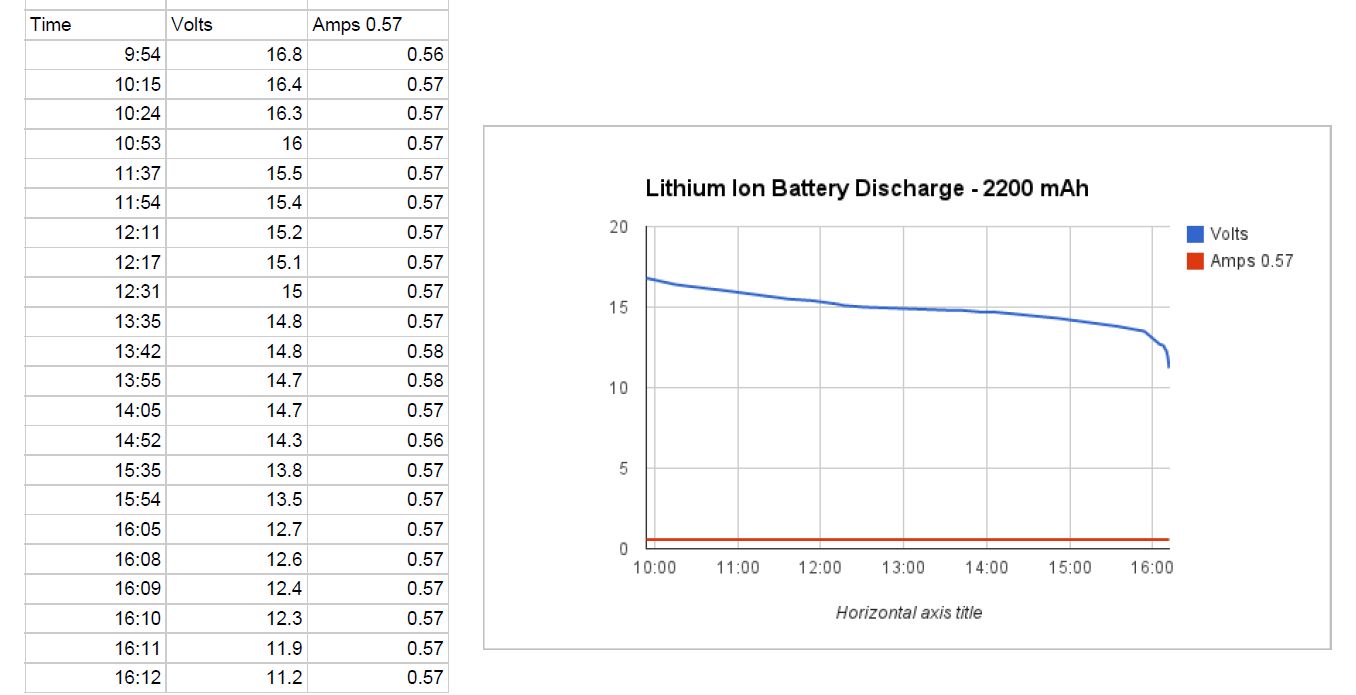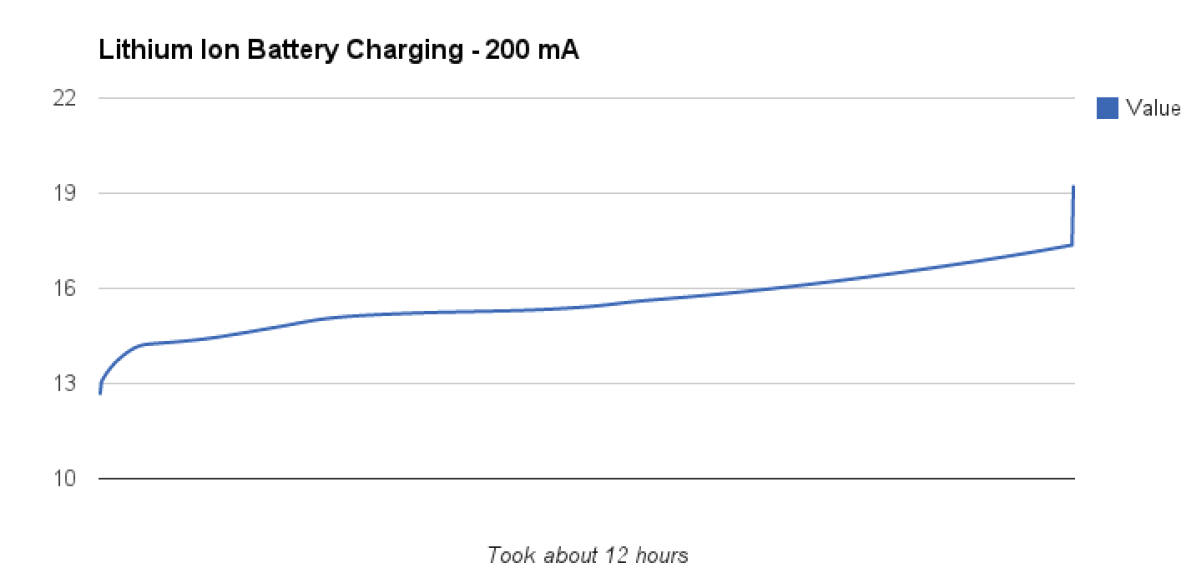Michael Glavin said:
Dave,
Great stuff… What equipment are you using to charge, discharge, graph and or record you effort?
There’s quite a peak at the end of charge; appears to be upwards of 19.2V which is well above the recommended cut-off or termination number of 16.8V(4.2V per cell)? Charge should terminate at no more than 4.3Vpc or 17.2V with a 4-cell battery pack to prevent overcharge and or plating of the cells.
Charging @ 200mA or .2A CC (constant current) equates to .09C charge rate… Well below the recommended OEM atypical slow charge rate of .2C or 440mA or .44A of a 2200mAh battery.
Your battery was essentially fully-charged once it realized 16.8V at the 200mA rate utilized as the cells are eventually saturated eliminating the need for the CV (constant voltage) final charge step…
I have previously suggested the use of a timer of some sort to mitigate extended charge times, it holds true with SLOW charging at the least IMO.
Generally SLOW charging Lithium cells is an acceptable practice, while TRICKLE charging is NOT!
Michael
Michael - the equipment for the first test was just a volt meter & a pencil & paper - each time I thought of it I jotted down the voltage as the engine slowly discharged the battery.
For the 2nd test I hooked the battery & motor up to a digital VOM that has a USB interface and a graphing application - I set it to record a data point once each minute.
The choice of 200 ma for charging was because of my not being around while the charging took place - I have charged at a higher rate but like to be in the room when I do that - since the charging would happen overnight I wanted to be conservative!
FYI, the VOM if from MCM - I have a link to it on the web page.
Steve’s comment about the spike is correct - there are more details on the web page.
dave

